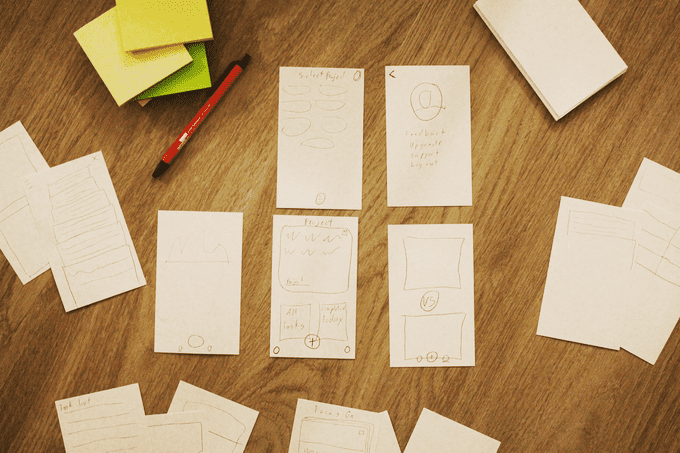A Startup of One
August 09, 2016
When I started working on Dolist about a year ago, my goal was to teach myself how to build and launch a product from scratch. I started with an idea and wanted to see it through all the way. I knew there was a lot I would have to learn. I’d have to fulfill each of the roles of the teams I led in the global startups I had worked for in New York. I was up for the challenge, but I was a start-up of one.
Background
Dolist started from a key problem that I had in my life. Between a full time job, my side hustle, going to classes, personal errands and trying to keep time for friends and family, I was struggling to find balance. Like any busy person I started making lists. I used Asana and Trello at work, I had a grocery list and a reading list on my iPhone, a few sticky notes around my computer and an inbox that was constantly refilling with things that demanded my attention.
I believe that overloaded professionals are overly aspirational when making to-do lists.
Defining the problem was the easy part. Coming up with a solution took a lot of research. After talking with potential users, a number of common threads started to emerge. In general, people will make lists at moments when they feel the most aspirational. They will add everything top-of-mind to their list. Then they start to tackle their list from the top and work their way down. But what is top-of-mind, is not necessarily what is most important. What if the most important task happened to be the last item on your list?
So I proposed a hypothesis: Overloaded professionals are overly aspirational when making to-do lists. Dolist can help by posing the question, “What is more important?” While the most important task might not be initially apparent, clarity is found by comparing tasks to one another. This hypothesis has driven me to build Dolist and has inspired me to DO across all business roles, to prove my hypothesis and that there are amazing results to just DOing, even if the challenges are many…
These are the major roles I took on to build Dolist.
Head of Product
With a background in product management, I figured this would be my most familiar hurdle. Gathering user requirements, talking to potential users, developing a product roadmap and managing updates are all under my area of expertise. Being a product manager was hugely helpful to me in getting started since I had managed many of others who had the other skills that I needed to make Dolist. I always worked closely with my teammates, took special interest in their challenges and always negotiated project timelines and resources to help them be successful, so I had a solid understanding of what I needed to do. In fact, my initial curiosity around app building was largely motivated by desire to be the best PM possible, by putting myself in the roles held by the team I managed.
Marketing and Branding
I never knew it would be so hard to come up with a simple four word tagline. - “Discover What Is Important”
I pitch the idea of Dolist to anyone who will listen! In the beginning I’d tweak the message every time and observed reactions. I hijacked conversations at parties, noted strong phrases in the business books I was reading and looked for marketing inspiration everywhere. When I finally launched the marketing site, I started A/B testing the landing pages pushing for more early sign ups. After many iterations I finally landed on a name, tagline and an idea that resonates with people, Dolist — Discover What’s Important.
UX Designer
I’m a huge advocate for design thinking! No matter the problem, I’m quick to pull out index cards to draw out rough wireframes. I would sketch all the main screens and lay them out to determine how users would swipe through the app. I found features I liked from apps across industries, critically examined why they worked and found ways to combine the best parts to achieve the design goals I had for Dolist.
From my beta testing group, I started to see the rise of user personas, such as my colleagues in product management, fellow entrepreneurs from my co-working space and my sister who has four kids! So I went about designing to make these users happier and happier. I did this by analyzing usage patterns, reaching out directly to my user base and asking people to show me how they use the app.
Growth Hacker
After each new release was pushed to the production server, I needed fresh eyes to try it out. I quickly exhausted my friends and family and had to get creative. I started by word of mouth, I slipped Dolist into conversation every chance I could get. When people at work asked me how my night went, I responded with a quick story about how I stayed up late so I could launch a new feature on my app. I’d invite them to join the beta to test it out.
develIt turns out if you build it, they won’t always come.
Once I ran out of coworkers, I had to expand my circle once again. I started going to networking events and talking about the cool new app I was working on to other entrepreneurs at my co-working space in Gowanus, Brooklyn. But the trouble is that everyone is working on some hot new app! It turns out if you build it, they won’t always come. At this point I had to get more creative.
I turned to the internet. Twitter was too crowded, my friends on Facebook were already tired of me posting about Dolist and it was too early to set up an Instagram account. So I started to think like an overworked professional, which was pretty easy because I was one, and started searching for self help articles. This turned out to be a treasure trove of ideal users. I started engaging people in the comments on articles with headlines like: “It’s 2016 Why Hasn’t Anyone Created a Good To-Do App Yet?” or “Ten Tips To Get Your Life and To-Do List In Order.” After a comment exchange, I would sent them an invite to join the beta.
My biggest and boldest growth hacking move was to relocate. I needed a city that has more support for tech ingenuity and entrepreneurship per capita. Moving from New York City to Raleigh, NC has opened many doors for me. In any way that you can find a better fit or reach your goals through location, do it. It’s always right for your business.
Lead Developer
This is just a short list of things I had either very little knowledge or no knowledge of before I started on this project just over a year ago: JavaScript, Angular, Node.js, Sails.js, jQuery, Parse, MixPanel, Intercom, PhoneGap, Cordova, Firebase, Passport.js, Bootstrap, Python, Linux, AWS EC2 and machine learning. The amount of interlocking parts needed to build an app is quite shocking. This has been one of the biggest and mentally challenging roles.
I’ve come to understand one of the key skills to being a successful developer is your ability to learn quickly. It is impossible to know every language, framework or library that you’ll have to work with when building an app. Quickly reviewing documentation to understand what it can and can’t do for me is quickly becoming a favorite pastime. I sought out classes at General Assembly, Udemy, through Meetups and Eventbrite. I’ve developed a large amount of these skills through teaching myself.
DevOps
This is one area that I majorly overlooked when I started down this journey. It’s easy to walk into your home and flip the light switch and feel at ease knowing that it will turn on. DevOps or development operations is the practice of making sure the power stays on. As Dolist quickly scaled up, I had to define all the backend processes needed to setup the server, ensure requests were being routed to the right ports and figure out a deployment process that would support almost daily updates to the production server. Since it’s just me, that too fell on my plate.
I quickly became fluent in Linux, bash commands and how to SSH into a remote computer. I researched a number of different hosting platforms and decided to go with Amazon Web Services. While the learning curve is high, I realized their platform was the only one that would that could follow me as I scaled up.
Chief Financial Officer
I was dead set on keeping costs lean and focusing on revenue drivers as early as possible. I took advantage of every free service I could and really scrutinized purchases. Here’s a list of the costs for a startup of one:
- Domain hosting — $39/year
- MaiChimp subscription — $10/month
- GitHub subscription— $7/month
- Amazon Web Services— ~$4/month
- Competitor research — ~ $10/one time fee
Conclusion
In light of the challenges and skills required, I’d still encourage you to get going on your new startup! Above you can see all I have gained since I dreamed up Dolist as a solution to a common problem. I accomplished my goal of learning how to build and launch a product from scratch. It’s my new goal to grow Dolist into a great tool with 10,000+ users and foster an engaged and returning community. Furthermore, it is my ambition to lead Dolist to become a strong, sustainable company that creates jobs and adds to the innovation landscape of my city, Raleigh, NC.
Although I am a startup of one, my network and community is a big part of the team too. Please join me by signing up for the beta-testing of Dolist.io, and please message me on LinkedIn if you’d like to join our team!
Update:
After 4 years and growing the app to about 1000 paid users, I decided to shut down Dolist in order to focus more on future ventures.


